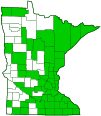summer azure
(Celastrina neglecta)
Conservation • Description • Habitat • Ecology • Distribution • Taxonomy
|
|
||||||||||||||
Description |
Summer azure is a small to medium-sized butterfly with a wingspan of 15 ⁄16″ to 1⅛″. It occurs in North America east of the Great Plains. It is very common in Minnesota. On the male, the upperside of the forewing is powder blue with a narrow black border just near the wingtip. The hindwing is lighter blue with no black markings. On the female, there is a broad black border on the forewing. On both sexes, the underside of both wings is pale grayish-blue or white with several black spots, more or less forming an inner and outer band across both wings, and a zigzag line in the submarginal area. The hindwing has no orange on the underside and it has no tail. The fringe on the forewing is white with black spots, while on the hindwing it is entirely white. The eyes are black. The antennae are black-and-white striped with a white-tipped club. |
Size |
Wingspan: 15 ⁄16″ to 1⅛″ (24 to 29 mm) |
Similar Species |
Spring azure and northern spring azure fly from late April to late June. Any azure seen in Minnesota after July 1 is almost certainly a summer azure. |
Habitat |
Forest edges, woodland trails, open woodlands, powerline rights-of-way, old fields, bogs, and swamps. |
Ecology |
Season |
One generation per year: Early July to early September |
Behavior |
|
Life Cycle |
Pupa (chrysalids) overwinter and emerge as adults in late spring or summer. |
Larva Hosts |
Unlike its close relatives, summer azure caterpillars feed on a wide variety of trees and shrubs, including dogwood, meadowsweet, and New Jersey tea. |
Adult Food |
Flower nectar |
Distribution |
||
|
Sources 7, 21, 24, 27, 29, 30, 71, 75, 82, 83. Biodiversity occurrence data published by: Minnesota Biodiversity Atlas (accessed through the Minnesota Biodiversity Atlas Portal, bellatlas.umn.edu, 7/15/2025). |
|
| 7/15/2025 | ||
Occurrence |
||
Common |
||
Taxonomy |
|
Order |
|
Superfamily |
Papilionoidea (Butterflies) |
Family |
Lycaenidae (gossamer-winged butterflies) |
Subfamily |
Polyommatinae (blues) |
Tribe |
Polyommatini (typical blues) |
Subtribe |
Lycaenopsina |
Genus |
Celastrina (Holarctic azures) |
Genus Formerly subspecies |
|
Subordinate Taxa |
|
|
|
Synonyms |
|
Celastrina ladon ssp. neglecta Cyaniris neglecta Lycaena neglecta |
|
Common Names |
|
summer azure |
|
Visitor Photos |
||
Share your photo of this insect. |
||
This button not working for you? |
||
Dan W. Andree |
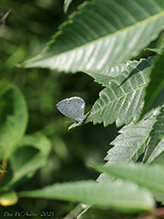 |
Small pale bluish butterfly... I seen a couple of them flitting around out at Frenchman's recently. They didn't sit still very long. Cute little butterfly. |
Kali Kocmoud |
||
 |
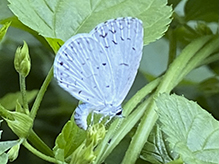 |
|
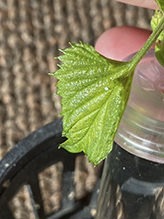 |
||
MinnesotaSeasons.com Photos |
||
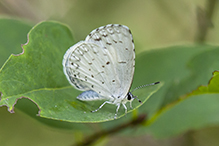 |
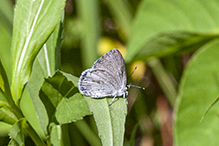 |
|
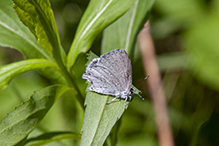 |

Visitor Videos |
||
Share your video of this insect. |
||
This button not working for you? |
||
|
Other Videos |
||
Summer Azure (Lycaenidae: Celastrina neglecta) on Leaf |
About
Published on Aug 13, 2010 Photographed at Grand Forks, North Dakota (13 August 2010). |
Summer Azure Butterfly on Slender Mountain Mint |
About
Published on Apr 13, 2014 Slender Mountain Mint is a great nectar plant for many butterflies. It is a bit invasive so you will have to take some time to control it. |

Visitor Sightings |
||
Report a sighting of this insect. |
||
This button not working for you? |
||
Dan W. Andree |
Location: Frenchman’s Bluff SNA I seen a couple of them flitting around out at Frenchman's recently. They didn't sit still very long. Cute little butterfly. |
 |
| Kali Kocmoud 7/10/2021 |
Location: New Richmond, WI |
 |
MinnesotaSeasons.com Sightings |
||

Created 4/25/2019 Last Updated: © MinnesotaSeasons.com. All rights reserved. |
